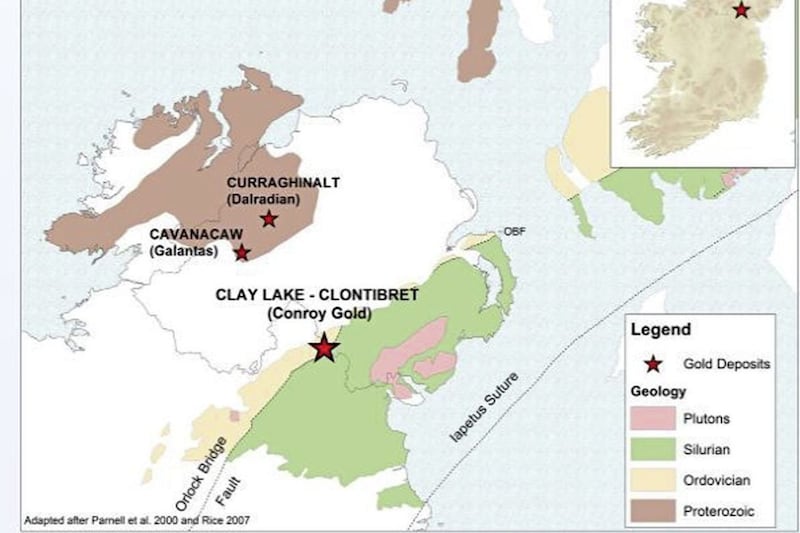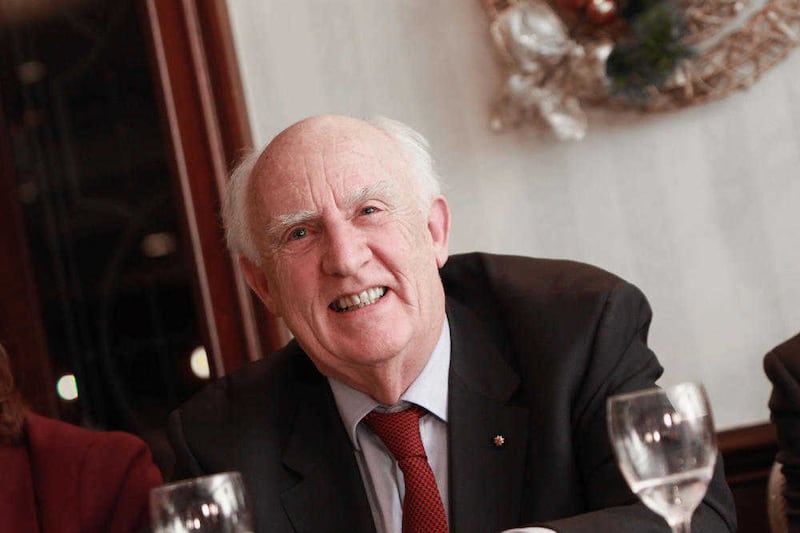DUBLIN-based prospecting firm Conroy Gold and Natural Resources says it has struck it lucky in south Armagh.
The company revealed yesterday that a sampling programme at its Clay Lake and Cargalisgorran licensed area forms a single, large, gold-in-soil target anomaly and is much bigger than it previously envisaged.
The single gold anomaly is more than 200 hectares in area (around 500 acres), nearly three kilometres (just under two miles) in length and, in places, two kilometres wide.
And Conroy will now try to confirm that the mineralisation in the anomaly stretches from one end to the other.
"This is a positive and exciting step forward and the new information supports the potential for the presence of very significant underlying resources at the Clay Lake Gold Target," the company's chairman Professor Richard Conroy said.
He previously suggested that the tiny Clay Lake near Keady, best known by fishermen for its perch, pike and rudd, could potentially be one of the biggest untapped gold mines in Britain or Ireland.
And he hinted that a mine there may be worth hundreds of millions of pounds, and the discovery "could be the jewel in the crown for our company".
The gold potential in the area emerged in the 1980s when a farmer found a 28 grammes gold nugget in a local stream bed near Clay Lake. It now lies in the Ulster Museum.
In a statement to the Stock Market on Thursday, Conroy said each end of the now single anomaly between Clay Lake and Cargalisgorran has already demonstrated there is gold in the bedrock.
And in the area between the northeast and southwest portions of the anomaly, intersections of low grade gold and black carbonaceous stock-work material have been encountered suggesting the possibility of continuity between the mineralisation events at either end of the anomaly.
"Previous drilling intersections from the southwest end, where the Cargalisgorran gold target is located, include 7.5 metres at 5.58 grammes of gold per tonne of ore and trenching of 10.0 metres at 2.46 grammes of gold per tonne of ore," the company said.
Previous drilling at the north-eastern end has provided intersections including 100 metres at 0.56 grammes of gold per tonne including 11.5 metres at 1.55 grammes of gold per tonne and trenching of 5.0 metres at 3.02 grammes of gold per tonne.
But although the company has now confirmed the Clay Lake and Cargalisgorran gold targets form one single anomaly, it still needs to demonstrate that the mineralisation continues in the area between either end of the anomaly.
Conroy shares, which before Christmas were worth around 0.3p, hit 32p earlier this month after a reorganisation saw the number of shares consolidated to a hundredth of their previous total, but were trading down around 3.5 per cent at 28p yesterday.







